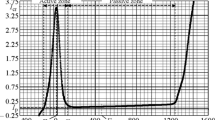Abstract
Corrosion properties of high-chromium-nitrogen steels with different structures determined by the heat treatment processes are investigated. It is shown that the ferritic structure provided by hardening from 1200°C and tempering at 700°C is preferable for steels bearing 21 – 24% Cr and over 1% N.
Similar content being viewed by others
REFERENCES
V. M. Blinov, A. V. Elistratov, A. G. Kolesnikov, et al., “Effect of heat treatment on the structural transformations and properties of high-nitrogen chromium steels,” Metalloved. Term. Obrab. Met., No. 6, 19–24 (2000).
H. Hanninen, “Corrosion properties of HNS,” Mater. Sci. Forum, 480–483 (1999).
Author information
Authors and Affiliations
Rights and permissions
About this article
Cite this article
Elistratov, A.V., Blinov, V.M., Rakhshtadt, A.G. et al. Effect of the Chemical Composition and Structure of High-Chromium-Nitrogen Steels on Their Corrosion Resistance. Metal Science and Heat Treatment 45, 385–389 (2003). https://doi.org/10.1023/B:MSAT.0000009786.65463.78
Issue Date:
DOI: https://doi.org/10.1023/B:MSAT.0000009786.65463.78




